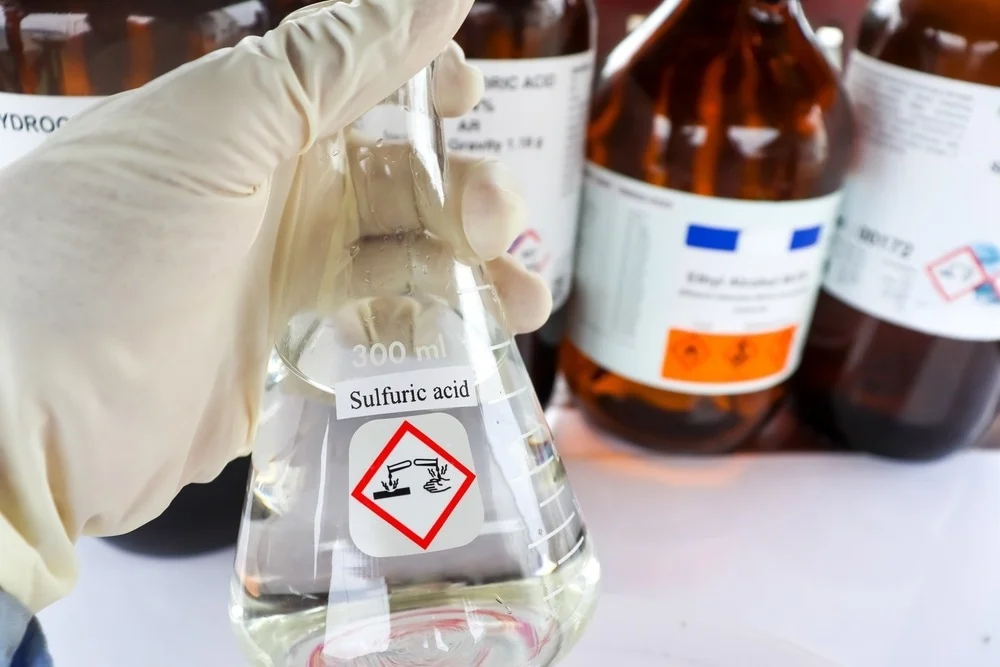Blog
Sulfuric Acid SDS Sigma: Essential Safety Information
Sulfuric acid SDS Sigma is an essential resource for anyone working with this highly corrosive substance. Safety Data Sheets (SDS) provide critical information about handling, storage, and emergency measures when dealing with sulfuric acid. This article will explore the key aspects of the sulfuric acid SDS Sigma, ensuring you understand its importance and how to access this vital information.
What is Sulfuric Acid?
Sulfuric acid is a strong mineral acid with the chemical formula H₂SO₄. It is colorless, odorless, and highly corrosive, making it a crucial substance in various industrial applications, including battery production, fertilizer manufacturing, and chemical synthesis. Understanding its properties and the associated risks is essential for anyone who handles sulfuric acid.
Importance of Sulfuric Acid SDS Sigma
The sulfuric acid SDS Sigma provides vital information regarding the safe handling of sulfuric acid. It includes data about physical and chemical properties, health hazards, first-aid measures, and fire-fighting measures. This information is essential for maintaining safety in the workplace and minimizing the risks associated with sulfuric acid.
Physical and Chemical Properties of Sulfuric Acid
According to the sulfuric acid SDS Sigma, sulfuric acid has several notable physical and chemical properties:
- Molecular Weight: 98.08 g/mol
- Density: 1.84 g/cm³
- Boiling Point: 337 °C (639 °F)
- Melting Point: 10 °C (50 °F)
Understanding these properties helps workers recognize the risks and implement appropriate safety measures.

Health Hazards of Sulfuric Acid
Working with sulfuric acid poses significant health risks. The sulfuric acid SDS Sigma highlights potential hazards, including:
- Corrosive to Skin and Eyes: Direct contact can cause severe burns and permanent damage.
- Respiratory Irritation: Inhalation of vapors can lead to respiratory issues.
- Digestive Tract Damage: Ingesting sulfuric acid can result in severe internal injuries.
Awareness of these hazards is crucial for implementing effective safety protocols and emergency response measures.
First-Aid Measures for Sulfuric Acid Exposure
The sulfuric acid SDS Sigma outlines essential first-aid measures for different types of exposure:
- Skin Contact: Immediately rinse affected skin with plenty of water for at least 15 minutes. Remove contaminated clothing.
- Eye Contact: Rinse eyes with water for at least 15 minutes and seek immediate medical attention.
- Inhalation: Move the affected person to fresh air and seek medical attention if symptoms persist.
- Ingestion: Do not induce vomiting; seek emergency medical help immediately.
Following these first-aid measures can significantly reduce the severity of injuries caused by sulfuric acid exposure.
Safe Storage Practices for Sulfuric Acid
According to the sulfuric acid SDS Sigma, proper storage practices are vital for preventing accidents:
- Use Appropriate Containers: Store sulfuric acid in compatible containers made of materials such as glass or certain plastics.
- Label Containers Clearly: Ensure all containers are labeled correctly to indicate the contents and associated hazards.
- Store in a Cool, Dry Place: Keep sulfuric acid away from heat sources and direct sunlight to prevent degradation of the container.
Fire-Fighting Measures for Sulfuric Acid
While sulfuric acid itself is not flammable, it can react with water and other substances, releasing heat and potentially causing fires. The sulfuric acid SDS Sigma provides guidance on fire-fighting measures:
- Use Dry Chemical Powder or Foam: In case of a fire involving sulfuric acid, use suitable extinguishing agents, such as dry chemical powder or foam, to control the fire.
- Avoid Water: Never use water directly on sulfuric acid, as it can lead to violent reactions.
Emergency Procedures for Sulfuric Acid Spills
In the event of a sulfuric acid spill, immediate action is essential. Follow these steps based on the sulfuric acid SDS Sigma:
- Evacuate the Area: Ensure that everyone leaves the vicinity of the spill.
- Alert Emergency Services: Notify the appropriate emergency personnel about the spill.
- Contain the Spill: If safe, use absorbent materials to contain the spill and prevent further spread.
Conclusion
In conclusion, the sulfuric SDS Sigma is a critical document for anyone working with this hazardous material. Understanding its properties, health hazards, first-aid measures, and safe handling practices is essential for ensuring workplace safety. By following the guidelines outlined in the sulfuric SDS Sigma, you can minimize risks and maintain a safe working environment.
